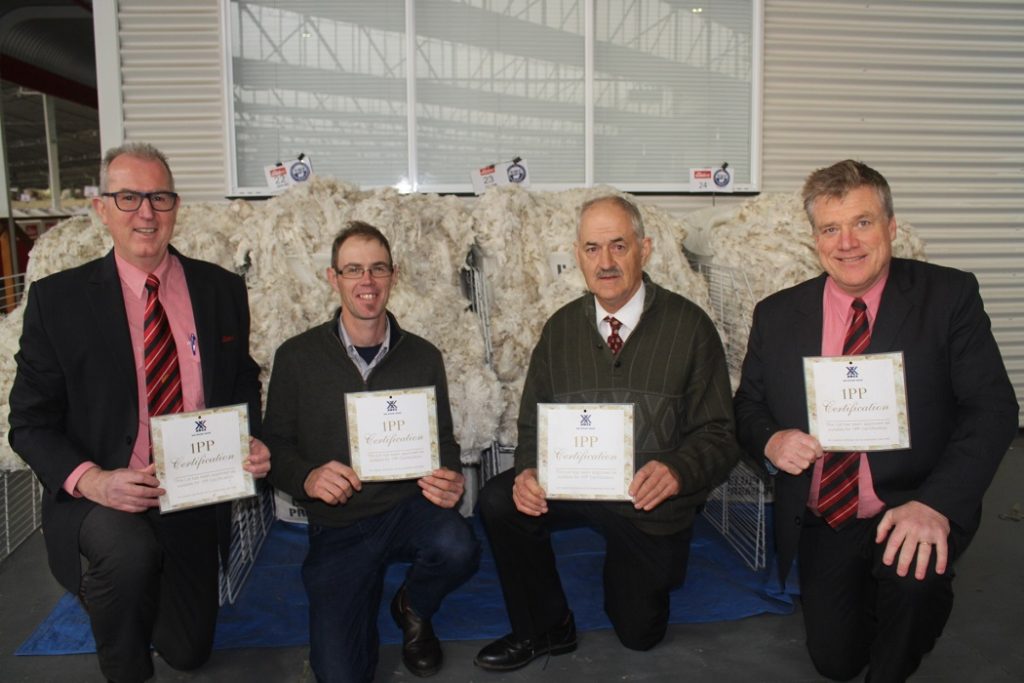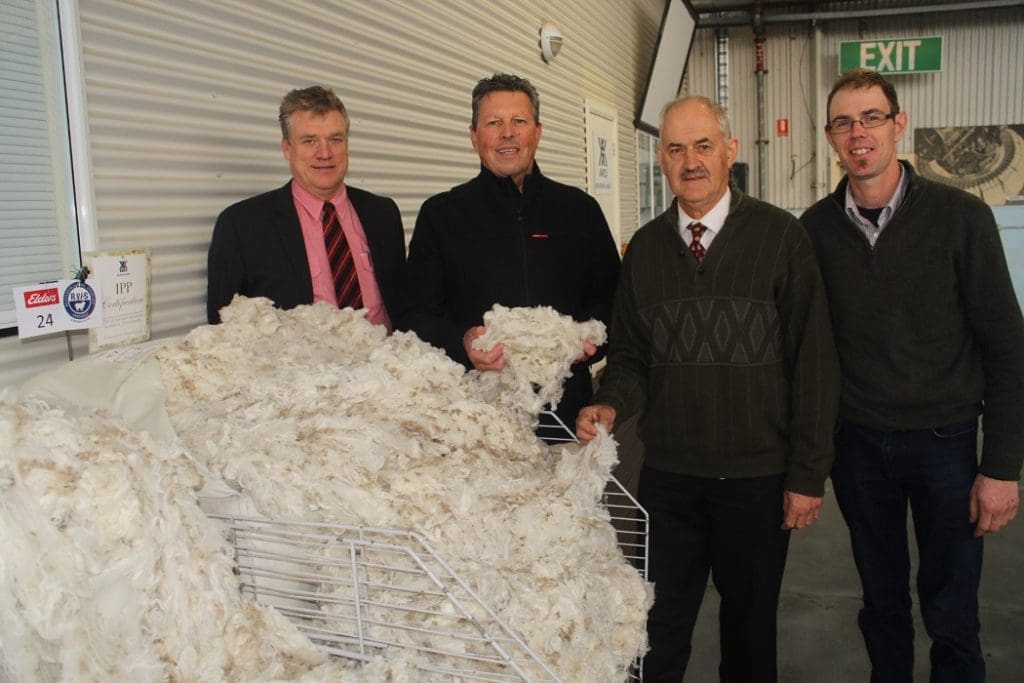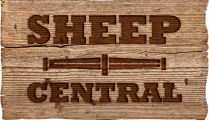
Elders’ National Wool Selling Centre manager Simon Hogan, left, with growers Matthew and Everard Linke and Elders’ district wool manager Andrew Howells with the four 1PP bales.
NATURAL pastures and forensic attention to breeding, classing and preparation have given Tarrington superfine wool producers Everard and Marilyn Linke and their son Matthew a rare batch of four IPP bales.
The EXSUPAAAAFM bales were also the EML Glenholme clip’s first Responsible Wool Standard certified wool.
The prestigious 1PP certificates are only issued to bales of Australian superfine wool of superlative quality, style and soundness, prepared in the best possible manner.
1PP wool must be fleece style 1 (choice), eligible for the premium AWEX ID of ASF1, be 16.9 microns and finer and 90/100s count visually. The wool must also contain 1pc or less vegetable matter and be at least 70mm in average staple length, unless the wool is significantly finer, when a slightly shorter length is accepted.
To meet these exacting standards the Linkes use mainly Glenara bloodline rams with some Sierra Park influence. Mr Linke carefully shears all the sheep and Matthew does the initial double skirting to remove frib, hind legs, backs, part of the necks and broad style wool from around wrinkles. The fleeces are then rolled up for later classing after shearing by the father and son team.
“You’ve got to be very regimented in what you have in the bale, because when you are classing you might have some maybes and go over them at the end of the particular bale to see if they might suit,” Mr Everard said.
“Often they don’t, because you’ve already made your mind up on what you’ve got.”
“We only put it over the table once, but it has to be skirted correctly,” he said.
“The shearer sometimes has to wait, because you only get one chance when you are skirting this stuff (to style) to do it right,” Matthew said.
The four 137-176kg 1PP bales were from a 64-bale clip. They contained high yielding wool (up to 77pc) from two year-old ewes and wethers, and 30-5 year-old wethers, that tested from 15.6-16.4 micron, with staple lengths of 80-90mm, a tensile strength range of 47-55 Newtons/kilotex and with 0.1-0.3 percent vegetable matter content.
Mr Linke said the four bales were all 90s-100s count and the fleece wool was classed within 5mm staple length variation. He said he was surprised to see the bales were so even on the Melbourne show floor.
Incredible measurements on 1PP wool
Elders National Wool Selling Centre manager Simon Hogan said the bales had incredible measurements with very low co-efficient of variation in diameter. He said the Linkes were regular producers of 1PP bales but this was the first time they had prepared four.
“In all my time at Elders it has always been a really good clip, but they keep getting better.
“The classing, tensile strength, the measurements backing up the wool … I don’t think I’ve seen it better, it is one of the best clips for that category,”
“They just keep raising the bar every year, it’s a credit to them.”
Matthew put down the increase in the number of 1PP bales to continual selection of rams and sheep classing to produce the true-to-count 90s-100s wool preferred by the Italian spinners.
“There is getting less and less of this each year, everyone wants to cut more wool.
“And it’s hard to find the correct rams for this sort of wool.”
Two bales were bought under contract by Vitale Barberis Canonico buyer Andrew Raeber before last Thursday’s auction and the remaining two bales were bought at auction for 3500c/kg greasy by Endeavour Wools for Italian client Loro Piana.

Elders’ district wool manager Andrew Howells, left, with VBC buyer Andrew Raeber, and growers Everard and Matthew Linke with the 1PP bales.
The Linke family has now produced 16 1PP bales since 2015, after being initially encouraged by Mr Raeber. The four 1PP bales averaged around $6000/bale.
The Linke’s district wool manager Andrew Howells said the sale result was a fantastic reward for a lot of hard work and dedication.
“We still refer to them as artists, but they are also like engineers – checking each fleece for the length, soundness, there is so much work going over and over it.”
Mr Howells said the Linke’s was the only clip he knew where the belly wool is skirted as fleece wool and sold as AAAM, with Marilyn Linke in past years picking through the bellies to remove vegetable matter.
“It’s quite amazing.”
Selection continues for non-mulesed wool
The sheep run on native grassland country that hasn’t been cropped since the 1930s and is treated with regular application of trace elements and biological fertilizer. Matthew said it had been a good year for growing wool on the country south of Dunkeld.
He said the family stopped mulesing ‘cold turkey’ to gain Responsible Wool Standard certification.
“We steined (freeze branded) for a year, but it wasn’t really accepted by VBC unfortunately so we thought we would give it (non-mulesing) a go.
“Really our only sort of market for this sort of wool is Europe and that’s all they want is non-mulesed.”
Matthew said he would use selection to success with non-mulesing.
“We are already drafting out our wrinklier ewes and we’ll put a crossbred ram over them.
“We are not breech scoring yet, because if the wrinkle is on the neck it is usually on the backside as well.”
Mr Linke said the selection is also fine-tuned during shearing.

HAVE YOUR SAY